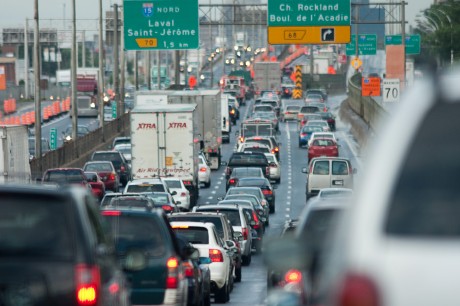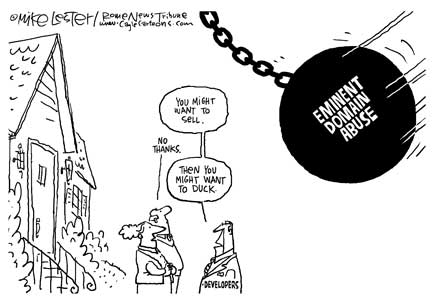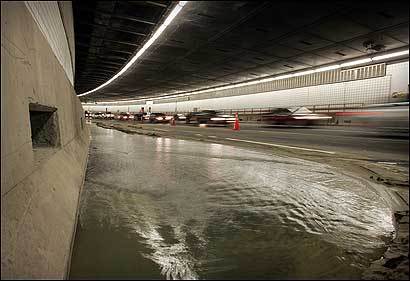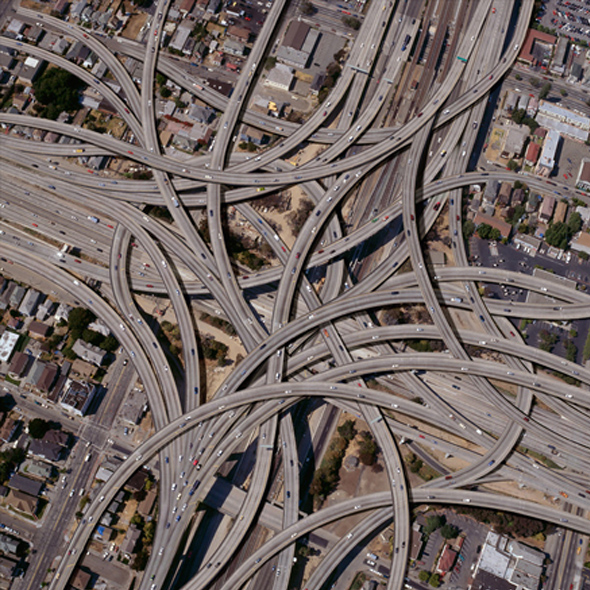
Changing Lanes: Visions and Histories of Urban Freeways
Authors: Joseph F.C. DiMento and Cliff Ellis, (The MIT Press)
To urbanist progressives, there is probably no greater evil than the modern freeway.
Ugly, noisy and expensive non-places that sterilize neighbourhoods, raze historical areas, divide communities, enable sprawl and facilitate the consumerist culture predicated by the personal automobile, freeways are seen as less necessary and more evil by this school of thought. To others, freeways are synonymous with the North American way of life: they enable, offering commuters unprecedented expanses of time and space. Certainly everyone can agree that freeways have shaped the physical form of our cities like no other built structure.
So how did freeways appear? According to professors Joseph DiMento and Cliff Ellis in Changing Lanes: Visions and Histories of Urban Freeways, plenty of hands contributed to their construction, beginning after World War One (while this book is strictly concerned with American freeway policy, its lessons can easily apply in a Canadian context as well).
As the automobile steadily proliferated throughout the United States during the Roaring Twenties, public policy shifted towards how to accommodate the increasing number of them. Early parkway road systems (designed for horse-drawn traffic) were becoming increasingly congested so visions of asphalt-and-concrete ribbons tying cities to new suburban communities soon emerged. Vehicle traffic flows would zip along these new roadways above- or below-street grade traffic, allowing commuters quick and easy access to dense urban cores (think Toronto’s Gardiner Expressway, Ottawa’s Queensway or Montreal’s Autoroute 40, for example).

Freeway construction slowed during the Great Depression but took off in the heady post-World War Two years, in part spurred on by Cold War plans for a national network of freeways & highways tying the country together (US President Dwight Eisenhower was said to have been personally impressed by the efficacy of Hitler’s autobahns during a visit to Germany after the war). By 1960, 40,000 miles of freeways, nearly twice the circumference of the earth, crisscrossed the continental US.
The book explains the complex parentage freeways had. Highway engineers, urban planners, economists, lawyers, judges, architects, bureaucrats and politicians of all stripes all played an active role in freeway construction, underwritten by the dominant industries of the time: oil, steel and glass. Undergirding all of this was of course the aspirational ethos of individualized car ownership, epitomizing the “American Dream” of a striving and affluent middle class.
However it wasn’t too long until the runaway love affair with the freeway started to hit some speed bumps: swathes of overlooked residents, renters and small business owners. Too often, new freeway developments ran through poor minority neighbourhoods in major US cities: “We say no more white man’s roads through black bedrooms” thundered one opponent of an expanded freeway network in Washington DC. By the turbulent 1970’s, marginalized citizens whose homes were set to be bulldozed organized against establishment visions of car-centric progress and the principle of Eminent Domain (allowing for the appropriation of private property for public use). A nascent environmental movement and alternative urban thinkers like Jane Jacobs also helped put brakes to the prevailing orthodoxy.

As a case-study driven textbook from the Massachusetts Institute of Technology, “Changing Lanes” skirts personality for a monochrome narrative. Its just-the-facts-ma’am approach doesn’t touch on Jacobs personality or that of her erstwhile opponent of the era, New York City’s “Master Builder” Robert Moses, who planned some of Gotham’s first freeways. It references, but says little about, the writings of urban philosopher Lewis Mumford, who’s seminal work on the modern city seems more relevant than ever.
The book concludes with a snapshot of cities repurposing (and even demolishing) their freeway networks. While New Yorkers have been gushing over the High Line rail bed-cum-elevated garden, other car-centric cities like Dallas are turning entire freeways into parks. Boston ambitiously buried its Interstate 93 Central Artery in an effort nicknamed the “Big Dig”. While effective (and extremely quiet), the project ended up wildly over budget at $22 billion; landing a man on the moon cost significantly less.

But the closing of freeway systems, based on the concept of reduced demand, may have happened purely by accident and has been heavily studied since. Just before Game 3 of the 1989 World Series between the San Francisco Giants and the Oakland Athletics, a 6.9 Richter scale earthquake hit the Bay Area. The resulting tremors lasted 15 seconds and heavily damaged the region’s Central Freeway (63 people also died as a result of the quake). State officials chose not to repair the artery despite warnings of impending traffic nightmares. Surprisingly, traffic actually improved as motorists made do and adapted to fewer commuting options through car-pooling, taking transit and just being more patient. This suggests that when it comes to urban freeway systems, perhaps both sides can agree that sometimes less is indeed more.


2 comments
That Los Angeles picture isn’t real.
Thanks for the comment! We now clarified that in the caption!